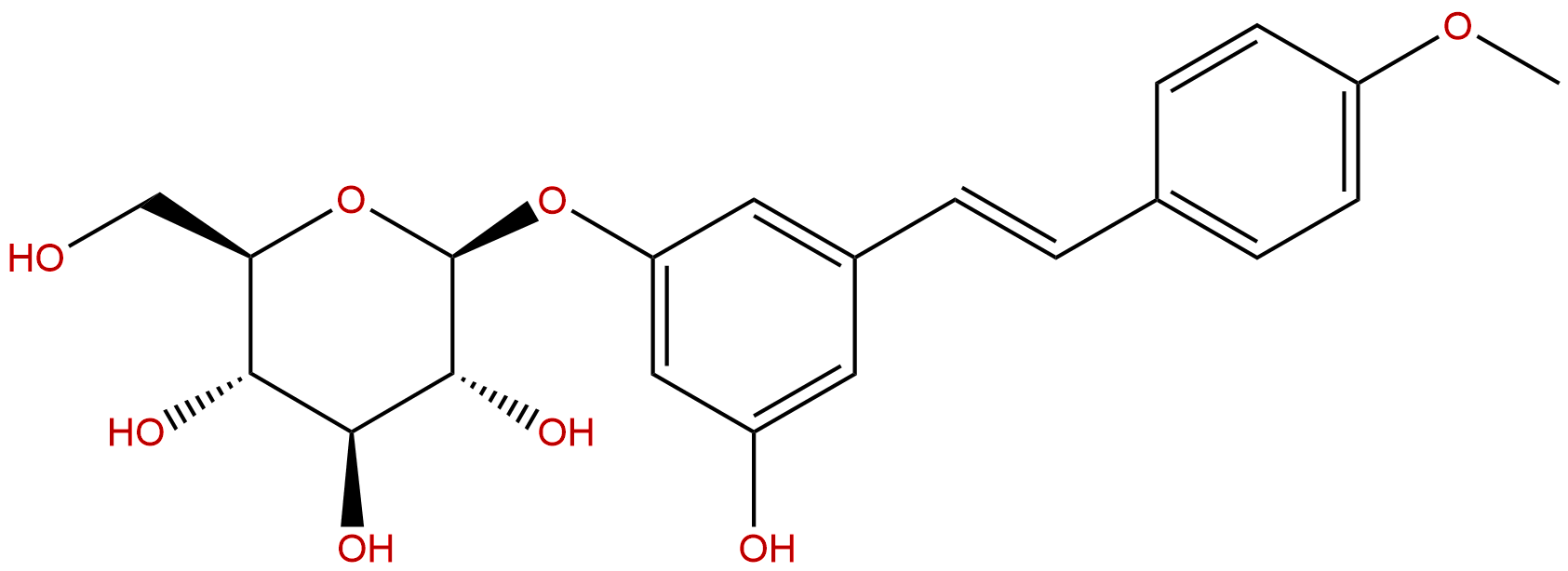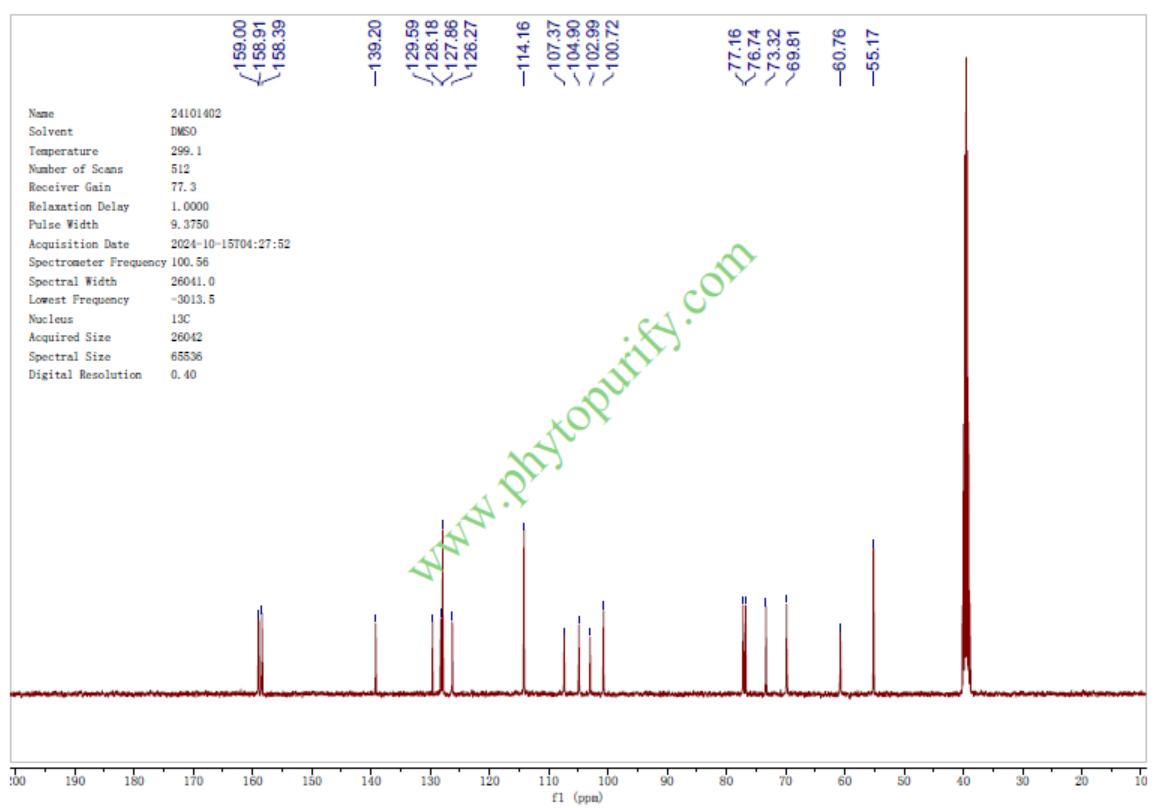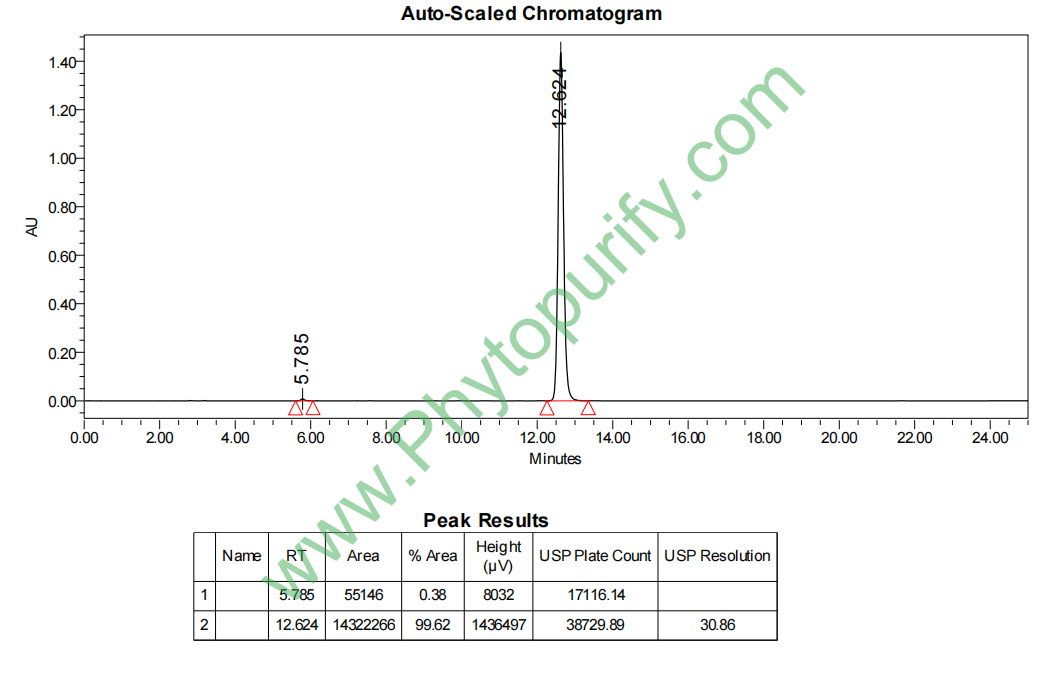
DesoxyrhaponticinCAS No.:30197-14-9
|
||||||||||
 |
|
|
||||||||

| Catalogue No.: | BP1673 |
| Formula: | C21H24O8 |
| Mol Weight: | 404.415 |
Product name: Desoxyrhaponticin
Synonym name:
Catalogue No.: BP1673
Cas No.: 30197-14-9
Formula: C21H24O8
Mol Weight: 404.415
Botanical Source:
Physical Description:
Type of Compound: Phenols
Purity: 95%~99%
Analysis Method: HPLC-DAD or/and HPLC-ELSD
Identification Method: Mass, NMR
Packing: Brown vial or HDPE plastic bottle
The product could be supplied from milligrams to grams. Inquire for bulk scale.
We provide solution to improve the water-solubility of compounds, thereby facilitating the variety of activity tests and clinic uses.
For Reference Standard and R&D, Not for Human Use Directly.
Description:
Desoxyrhaponticin is an agent that is potentially effective in controlling postprandial hyperglycemia in diabetes. Desoxyrhaponticin could be considered as a promising fatty acid synthase(FAS) inhibitor, it could inhibit intracellular FAS activity and downregulate FAS expression in human breast cancer MCF-7 cells.
References:
Food & Function, 2014 , 5 (2) :251-6.
Inhibitory effect of desoxyrhaponticin and rhaponticin, two natural stilbene glycosides from the Tibetan nutritional food Rheum tanguticum Maxim. ex Balf., on fatty acid synthase and human breast cancer cells.
Fatty acid synthase (FAS) has attracted more and more attention as a potential target for cancer treatment. Natural FAS inhibitors are emerging as potential therapeutic agents to treat cancer. Rheum tanguticum Maxim. ex Balf. (rhubarb) is a traditional Chinese nutritional food and has been reported to possess a variety of biological activities, including the ability to induce the apoptosis of cancer cells.
METHODS AND RESULTS:
This study indicates that Desoxyrhaponticin (DC) and rhaponticin (RC), two stilbene glycosides from rhubarb, could be considered as promising FAS inhibitors. We found that both DC and RC could inhibit intracellular FAS activity and downregulate FAS expression in human breast cancer MCF-7 cells. In addition, the apoptotic effect of DC on human cancer cells was announced for the first time.
CONCLUSIONS:
Since FAS plays a key role in the biosynthesis pathway of fatty acids in cancer cells, these findings suggest that DC has potential applications in the prevention and treatment of cancer.
J Pharmacol Exp Ther. 2007 Jan;320(1):38-46.
Desoxyrhaponticin (3,5-dihydroxy-4'-methoxystilbene 3-O-beta-D-glucoside) inhibits glucose uptake in the intestine and kidney: In vitro and in vivo studies.
Rhubarb extracts have been reported to improve oral glucose tolerance in diabetic animals.
METHODS AND RESULTS:
In the present study we have investigated the antidiabetic actions of Desoxyrhaponticin, a major stilbene in rhubarb, as a glucose uptake inhibitor. Desoxyrhaponticin was demonstrated to inhibit glucose uptake in rabbit intestinal membrane vesicles as well as in rat everted gut sleeves, with IC50 values of 148.3 and 30.9 microM, respectively. Kinetics studies revealed that Desoxyrhaponticin is a competitive inhibitor of glucose uptake in both systems. Moreover, Desoxyrhaponticin could reduce glucose uptake in the intestinal membrane vesicles of both normal and diabetic rats. In addition, glucose uptake in the renal membrane vesicles of both normal and diabetic rats was reduced by Desoxyrhaponticin. Under the inhibition of Desoxyrhaponticin, uptake of glucose in both the intestinal and renal membrane vesicles of the normal rats was no different from that of the diabetic rats. The IC50 values of the uptake inhibition in the renal membrane vesicles of normal and diabetic rats were 118.8 and 115.7 microM, respectively. In a type 2 diabetic animal model in which rats have been treated with streptozotocin at the neonatal stage, postprandial hyperglycemia was significantly suppressed by oral administration of this compound (300 mg/kg b.wt.).
CONCLUSIONS:
These results suggest that Desoxyrhaponticin is an agent that is potentially effective in controlling postprandial hyperglycemia in diabetes. The in vivo antidiabetic action of this compound can be explained, in part at least, by inhibition of glucose transport in the small intestine and inhibition of glucose reabsorption in the kidney.
NMR of Desoxyrhaponticin

HPLC of Desoxyrhaponticin
